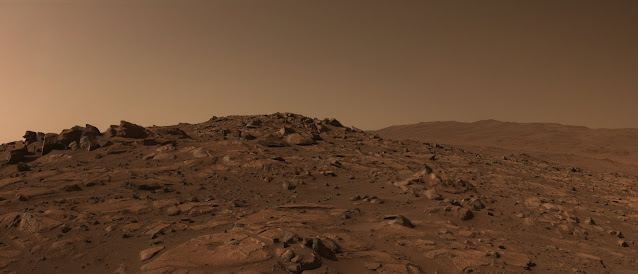Download Free 2024 Hubble and Webb Calendar | European Space Agency
Low Resolution Digital 2024 Calendar Adobe PDF File (Size 14 MB):
High Resolution Digital 2024 Calendar Adobe PDF File (Size 105 MB):
https://esahubble.org/media/archives/calendars/pdf/cal2024.pdf
Print-Ready 2024 Calendar Adobe PDF File (Size 610 MB):
https://esahubble.org/media/archives/announcements/pdf/calendar_hubble_2024_v010_print.pdf
This calendar is for anyone to download, print, share and enjoy. To celebrate another year of exciting images and discoveries from the NASA/European Space Agency Hubble Space Telescope, and the completion of the first year of science operations with the NASA/European Space Agency/Canadian Space Agency James Webb Space Telescope, ESA/Hubble and ESA/Webb have released a new calendar for 2024 that showcases beautiful imagery from both missions.
The 2024 calendar features a selection of images published throughout 2023. These include imagery of planets, star clusters, galaxies, and more.
The images featured in the 2024 calendar are:
Cover: The subject of the first anniversary image from the James Webb Space Telescope is the Rho Ophiuchi cloud complex, the closest star-forming region to Earth. Jets bursting from young stars crisscross the image, impacting the surrounding interstellar gas and lighting up molecular hydrogen.
January: Formed by a star throwing off its outer layers as it runs out of fuel, the Ring Nebula is an archetypal planetary nebula. The near-infrared image makes the ring’s intricate detail visible, while the mid-infrared image reveals concentric features in the outer regions of the nebula’s ring.
February: In 2023 several images from Hubble of ‘jellyfish’ galaxies, named for their beautiful trailing tentacles, were released. These jellyfish are all travelling through galaxy clusters, ploughing through the diffuse gas that pervades such clusters. The resulting ‘ram pressure’ strips gas from the galaxies and creates these trailing streamers, where new stars form.
March: This month features three images that give radically different views of the galaxy NGC 6822. At the bottom, in Webb’s mid-infrared image, the emission of light by galactic dust is prominent, obscuring the galaxy’s stars. In the middle, the near-infrared image shows the galaxy’s countless stars in incredible detail. The two views are combined in the top image.
April: Released to celebrate Hubble’s 33rd anniversary in April 2023, this month features the star-forming nebula NGC 1333 in the Perseus molecular cloud. Hubble’s colorful view, showcasing its unique ability to obtain images in light from ultraviolet to near-infrared, unveils an effervescent cauldron of gases and dust stirred up by newly forming stars within the dark cloud.
May: A massive galaxy cluster, SPT-CL J0019-2026, dominates the center of this month’s image from Hubble. The view is populated with a serene collection of elliptical and spiral galaxies, but galaxies surrounding the central cluster appear stretched into bright arcs, an amazing example of gravitational lensing.
June: Webb’s view of the Orion Bar region is a part of the Orion Nebula that hosts intense star formation activity and active astrochemistry. Harsh ultraviolet light from the stars of the Trapezium Cluster carves out a rich tapestry of cavities and filaments.
July: The distorted galaxy NGC 3256 is the result of an ancient clash between two galaxies. The image from Webb captures infrared light from dust grains, irradiated by young stars that were formed from the collision. The image from Hubble highlights hot, massive stars in the two galactic cores, shrouded by dark dust that blocks visible light.
August: A portion of the open cluster NGC 6530 appears as a roiling wall of smoke studded with stars in this month’s image from Hubble. The cluster is set within the larger Lagoon Nebula, a gigantic interstellar cloud of gas and dust; it is the nebula that gives this image its distinctly smokey appearance.
September: In its first year the James Webb Space Telescope has returned stunning infrared images of the Solar System’s outer planets and some of their moons. Featured this month are Jupiter, Saturn, Uranus, and Neptune.
October: The graceful winding arms of the grand-design spiral galaxy M51 stretch across this month’s Webb image. This galactic portrait is a composite image that integrates both near-infrared and mid-infrared data. Red colors trace out dust grains, while orange and yellow reveal regions of gas ionised by recently formed star clusters.
November: This month features a star-filled view from the Hubble Space Telescope of Terzan 12, a globular cluster embedded in our Milky Way galaxy. Creeping tendrils of galactic gas and dust blanket large portions of Terzan 12, giving some stars a sinister red hue. Relatively unobscured stars shine brightly in white and blue.
December: This month’s image features the central region of the Chameleon I dark cloud. Cold, wispy cloud material is illuminated in the infrared by the glow of a young, shrouded protostar. Its study points at icy molecules forming in clouds of gas and dust that will one day form stars and planets
Please note that hard copies are not available directly from ESA/Hubble/Webb.
Credit: ESA/Hubble, ESA/Webb
Release Date: Dec. 15, 2023
#NASA #ESA #Astronomy #Space #Science #Hubble #HST #JWST #Planets #Stars #StarClusters #Galaxies #JamesWebb #WebbTelescope #UnfoldTheUniverse #Europe #CSA #Canada #GSFC #STScI #UnitedStates #AdobePDF #FreeCalendar #Calendar2024 #STEM #Education





.jpg)






















.jpg)